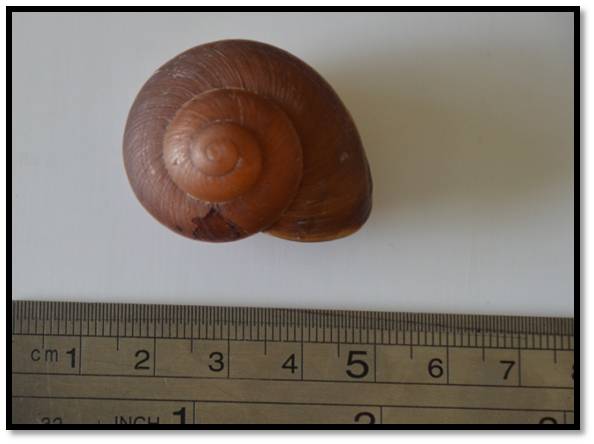
FOREST SAVER Snails that could be among the smallest in the world had been discovered by a team of researchers in the town of Argao, Cebu province. —CONTRIBUTED PHOTO
CEBU CITY—A team of researchers from a Cebu university was all too familiar with snails but the species it found in the town of Argao, just a little bigger than a pin head, still came as a surprise.
“We don’t know how long they have been there because nobody could see them,” said Professor Rama Rosales, vice president for research and development of Cebu Technological University (CTU).
“They grow up to only 0.5 millimeters and they hide among leaves’ litter,” added Rosales.
While the snails that the CTU team found in Argao were barely visible, their mere presence indicated that the forests were “alive,” he said.
Bigger role
Snails, Rosales said, play a bigger role in the ecosystem than people give them credit for.
“Snails serve as a nutrient recycler, breaking down leaves and other plant materials and bringing back their nutrients into the soil,” Rosales said.
Rosales headed the research team seeking out snail species in Cebu for identification.
Its work was part of the Niche Centers in the Region for R&D (Nicer) program of the Philippine Council for Agriculture, Aquatic and Natural Resources Research and Development of the Department of Science and Technology.
The government allotted P18 million for Nicer projects in Central Visayas, which sought to encourage researchers to study the region’s flora and fauna to identify more species and learn about their roles in preserving biodiversity.
Other animals
Aside from mollusks or snails, Nicer also sought to identify bats, birds, ferns and trees.
Rosales said in Cebu province alone, where 20 percent of the landmass were forest patches, biodiversity remained healthy.
He said one of the most diverse animal resource in Cebu were mollusks with at least 50-100 species abundant in different parts of the province.
Mollusks are invertebrates with soft unsegmented body covered with calcerous shells and are found both in the sea and on land.
The most common mollusks are snails.
Rosales said his team had not yet identified the species of micromollusk it found in Argao as it needed a more powerful microscope, which was arriving next year yet.
Specimens
CTU had already identified over 23 species of bigger land snails.
It had also collected specimens of eight unidentified species of land snails.
Yet there remained 17 species of unidentified micro mollusks, which might be just the smallest in the world.
The current record for the smallest snail was set in Guangxi, China, where the Angustopila dominikae, which grows to a maximum of only .86 mm, had been found.
The one found in Argao was smaller.
“It would be a great discovery if our micro mollusks in Argao would be proven to be the smallest snail in the world,” Rosales said.
No equipment
Yet Rosales said that it would take time before the Argao micro snails can claim to be the smallest since the research team was still studying it.
In the Argao campus of CTU, four plots of 20-by-100-meter forest lands had been protected for research on micro mollusks.
“At this point, all we know is that these small snails eat dead leaves,” Rosales said.
“Other than that, we will need more time to study,” he said.
He asked other researchers to help in the study of micromollusks since there was no published literature in the Philippines about these.
“The more researchers work on this project, the more we can understand these special species that were hidden from our eyesight on the forest floors,” he added.
Potentials
Studying micromollusks can lead to a huge potential in different fields, primarily in agriculture, as the snails may be used to rehabilitate farmlands.
Rosales said the snails could even be used for pharmacology to check for antibacterial properties from their slime.
“There are endless possibilities as we continue to gain more knowledge about these small snails,” he said.
For Rosales, though the micromollusks were too small to notice, they provide a big role in the ecosystem that keeps the cycle of life in the forest moving gently through time.
Forest residents
Rosales added that it was not only the mollusks that needed to be studied but the entire forest as well in order to identify all species thriving in it.
“We need to know what lives in our forest so we can start to protect it,” Rosales said.